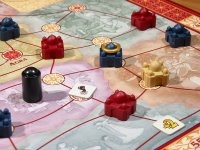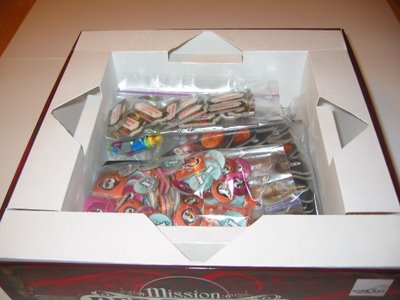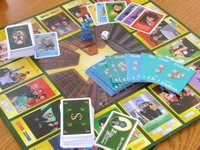Is It Too Much to Ask?
 Please do not take this as rant, so much as a plea. I'm going to use one specific case to illustrate my point, but I don' t mean any ill will towards the publisher, the designer, nor the retailers. We live in the Age of Information. Companies have fancy web sites so you can get this information, and so they can get your money. Everything is as it should be.
Please do not take this as rant, so much as a plea. I'm going to use one specific case to illustrate my point, but I don' t mean any ill will towards the publisher, the designer, nor the retailers. We live in the Age of Information. Companies have fancy web sites so you can get this information, and so they can get your money. Everything is as it should be.I'm as excited as the next guy for new releases. If I'm hot for a game, I watch for any bit of news about its progress from the design and playtesting to the manufacturer to my door. Of course, I want it now, but I realize things take time, and that there are lots of unknowns. I want you to take as long as you need to get it right. But I would also like to know what information is available, and when that information is given, I expect it to be accurate. By this, I do not mean that if you expect a game to be ready to release in 6 months that you meet this deadline perfectly. I mean that I expect you to update your information as things change, when things change. I expect this from the publisher and the retailer. If you are going to give any information, at least make it as accurate as possible.
Case in point. I am a sucker for Martin Wallace games. Sure, I give him grief about the rules, but there is something really compelling in his heavier stuff that I can't resist. Ever since the first tidbits of information about Perikles, I have been watching it expectantly. Having read all the detailed reviews, seen the rules questions, and having talked to some who have played it, I really want this game.
Ok, so now what? Watch the updates on Gone Cardboard: Essen (November). Watch the Fantasy Flight Games upcoming products page: On the Boat. Ok, fine. It's on its way. Just a couple more weeks.
What's this? A retailer has it? Check Gone Cardboard. No change. Check FFG. No change. Maybe it's a mistake. Email the retailer. They have it, but they are not the retailer I want to use because of other games I want to order. Fair Play Games doesn't even have Perikles listed yet, not even for pre-order. I email them. They are in pre-Christmas rush; it was an oversight; website updated (expected 1-5 days). Today is 11/28!
Email FFG. The game has shipped. Check the websites. On the boat. Expected 1-5 days. Meanwhile, every other retailer that I can't use is getting it in stock. 11/30. Still 1-5 days.
Sure, I'm being impatient. But it would save the publisher, the retailer, and the customer a lot of hassle if the information was accurate. If the website said "12/1", then I would wait patiently for 12/1. Likewise, if Rio Grande Games said that El Grande and Goa were expected in August 2006, instead of "late 2005" then bumping it by a month every month, it would have saved so much hassle.
So that's my plea. I'm really looking forward to Perikles. It has even surpassed my interest in Gheos.
Perikles image by toulouse
































